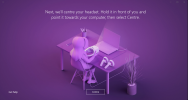Hello, I'm still struggling with the finalization of my image and three things don't want to go the way I want:

Tanks a lot for your help, I've attached my latest preset.
- I cannot complete the mixed reality portal setup. After I install the app from the store (can it be installed with operating system?) and start the setup of my Reverb G2, the portal closes after I have to center my headset without any error messages.

- I use the US-ANSI keyboard with the US-International layout to be able to write German characters like "üäß". but i have trouble setting it up correctly in the unattended file. Either I end up with two different input methods (e.g. english-gb, english-us int) or I have a german iso input method after installation. I want to end up with single en-us intl. keyboard layout with the german regional settings for date/time or if possible en-us intl. + russian input methods and german regional settings. What/how do I have to set this? Which of the four language settings affects what?

Tanks a lot for your help, I've attached my latest preset.
Last edited by a moderator:
